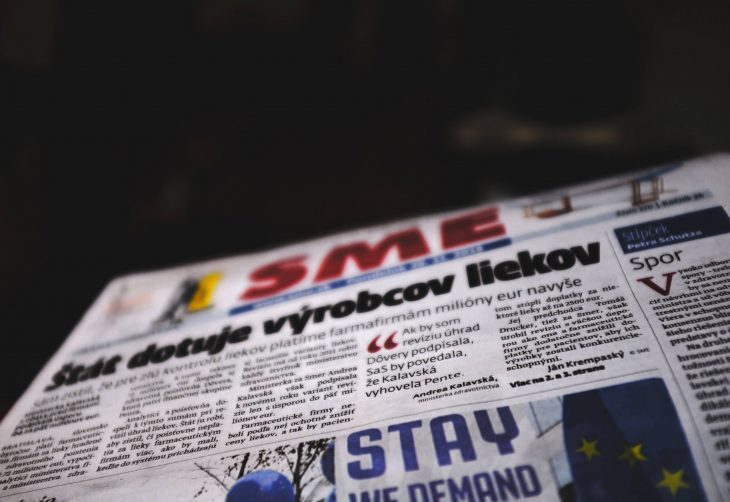
On the first workday in January 1993 in the new Slovak Republic, the board of the state-owned company Smena removed the managers of the daily Smena because of a “bad” bottomline. In fact, the daily had a profit of 8 million crowns. In response to this step by Prime Minister Vladimir Meciar’s government, 50 editors resigned.
They went on to found the daily SME which appeared on newsstands in less than two weeks. SME and Smena competed for a time, with Smena losing circulation. In August 1995, SME absorbed Smena. The circulation shot up to 70,000. But then our troubles began. On October 9, 1995, the government printing house refused to print SME, citing “economics.” Another state-owned printing plant in Bratislava, Danubiaprint, also refused to print our paper, evidently for political reasons. These acts threatened the life of the paper. For the next eight months, the paper was forced to print in Komarno, a town 100 kilometres outside Bratislava; after they came off the press, the newspapers had to be driven to Bratislava for national distribution.
At first, the deadline for stories had to be set at 3:30 p.m., then at 6 p.m. – this meant we couldn’t print late-breaking stories carried by other Bratislava papers. In spite of this handicap, the circulation decreased only 10 percent. Finally, SME found a solution. We built our own print shop with a loan from Media Development Loan Fund. In the end, our problems only made us stronger. We were MDLF’s first borrower. With their loans, we built two print shops-one in Bratislava, the other in Kosice. Both played a key role not only in our operation but also for other publications.
They were the first politically independent printhouses in Slovakia.We printed the independent daily SME in Bratislava; the Kosice print shop saved the eastern Slovak daily Korzo. Like Smena, state pressure forced Korzo to change its content. In protest, the editorial team left for our publishing house, which could guarantee their editorial independence. We changed the paper’s name from Korzo to Korzar, and it grew into the strongest regional daily in Slovakia.
Both of these investments were of key importance for the development of our publishing house and for the prosperity and effectiveness of our business. They made our business profitable and to this day we use both of the printing presses. We were able to repay all our loans from MDLF well before their due dates.
The process of obtaining the first MDLF loan was complicated but at the same time was perhaps easier than obtaining subsequent loans because for our mere survival, the first loan had to come very quickly. The second and third MDLF loans were much more complicated and MDLF required a more sophisticated business plan and a better understanding of the future of the publishing house.
Of great importance to us was that MDLF implemented standards and steps, needed in a precisely managed company. I mean by that revenue analysis, cash flow planning, creating business plans, creating plans for a number of years ahead. Today, a business plan seems banal, but prior to working with MDLF, we had never used what has become that common tool of management. We had always compared the state of the company with the past rather than projecting into the future. MDLF helped us standardize management. We didn’t need MDLF help on the journalistic side of the business, but in management and running a company, it was our first and our best learning experience.
Alexej Fulmek
Chairman of the Board of Directors
Petit Press (publisher of SME)
Bratislava, Slovakia
SME was the main source of independent local news during the authoritarian Meciar regime and remains one of the leading independent dailies in Slovakia. Petit Press now publishes more than 30 national and regional titles with a weekly run of hundreds of thousands of copies. Its online news services reach more than 1 million users each month.